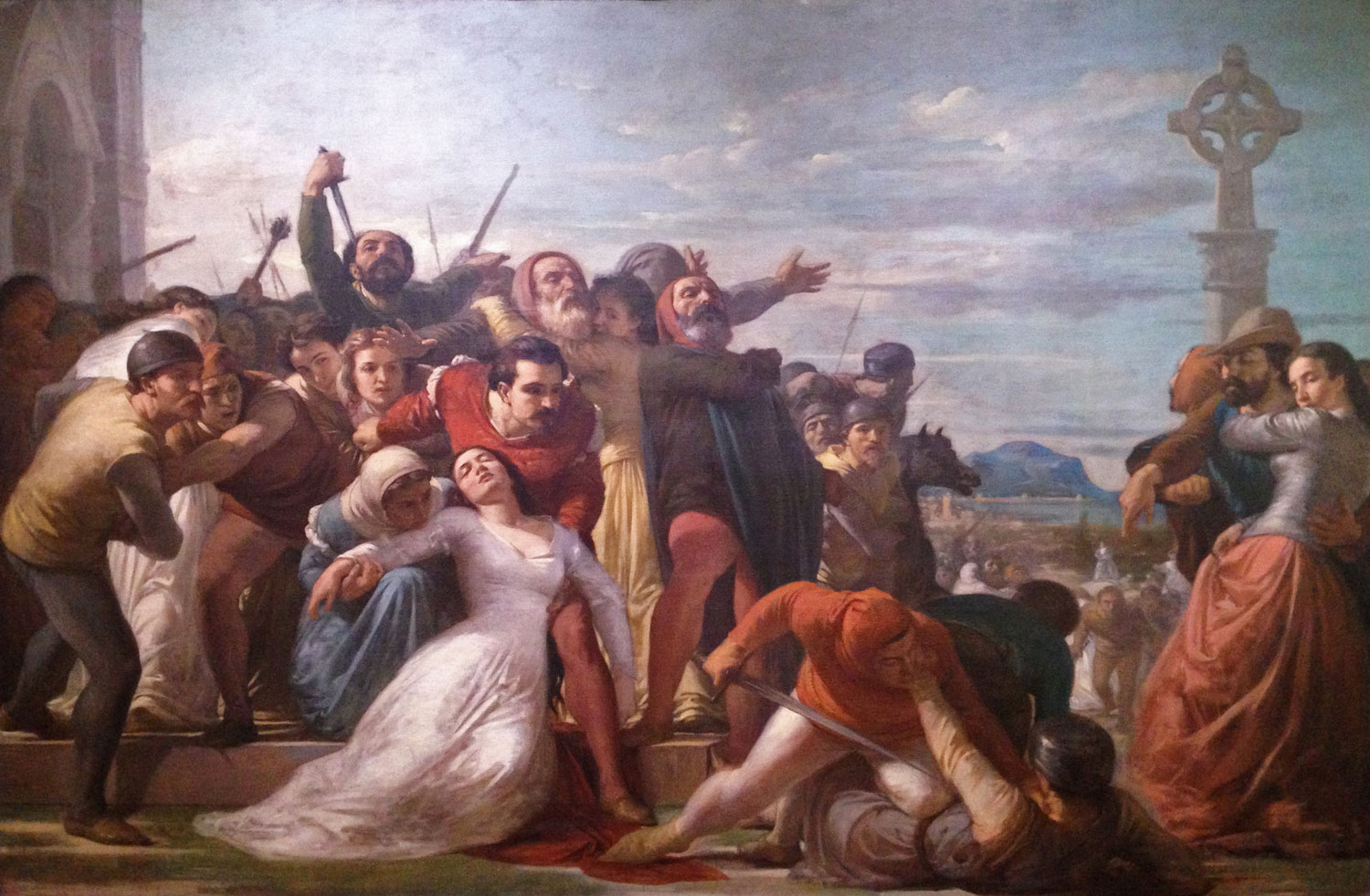Even before their rapid conquest of England in 1066, Norman knights arrived in Saracen-controlled Sicily. Pretending to serve as mercenaries variously to the Lombards, the local lords of Benevento or the Byzantines, they plotted long-term opportunities for themselves in Sicily. Those who found it even more enticing than a Crusade to the Holy Land settled in to enjoy domination of the local population. Sicily under the Normans became a crossroad for intense yet prosperous interaction among Norman-Catholic, Byzantine-Orthodox and Arab-Islamic cultures, endowing Palermo with great art, an art that glorifies the severe authoritarianism of centralized royal and divine power, such as the famous mosaic of Christ Pantocrater in Monreale.
Friday, November 3, 2017 | 7:30-9:30 pm
Sicily as a Site of Encounter / Teofilo Ruiz (History, UCLA). After the defeat of the Muslims, Sicily became a county under Norman rulers in 1071 and, under Roger II, a kingdom in 1130. The kingdom of Sicily encompassed most of southern Italy (the mezzogiorno), so towns along the Amalfi coast joined this ambitious political and cultural project. Under Norman and Hohenstaufen rulers, Sicily became a paradigmatic site of encounter. Greek, Arabic, and Latin became the official languages. The Normans promoted a vigorous cultural program in which great works of art, such as the church at Monreale, the Mediterranean map of al-Idrisi, and the tombs of Norman kings in Palermo, showed the richness of cultural hybridity. This lecture recaps the history of Sicily and southern Italy and discusses Sicily as a site of encounter. In Sicily a multi-ethnic, multi-religious, and multi-linguistic population forged a unique moment in time. Their many accomplishments, carried out under Norman and Hohenstaufen rule, show the possibilities for cooperation, as short-lived as they were, in Mediterranean societies.
Performance / Sicily at the Opera: Sicilian Life on the Operatic Stage / Clifford (Kip) Cranna. Sicily’s unique culture and history have been vividly reflected in operas written by, for, or about Sicilians. San Francisco Opera’s Dramaturg Clifford (Kip) Cranna examines the ways in which operatic art has mirrored the island’s colorful past. Live performances will highlight such masterpieces as Verdi’s I Vespri Siciliani (The Sicilian Vespers), based on momentous events in medieval Sicilian history, and Mascagni’s Cavalleria Rusticana (Rustic Chivalry), a potent tale of machismo, betrayal, and revenge in the 19th-century Sicilian countryside. Featuring Marie Plette (soprano), Philip Skinner (bass-baritone) and Bryndon Hassman (piano).
Saturday, November 4, 2017 | 10:00 am – noon & 1:30 – 4:00 pm
Before the Normans / Fred Astren (Jewish Studies, SFSU) — For half a millennium before the late 11th-century Norman conquest, the history of Sicily and southern Italy was characterized by division and competition between distant empires and local centers of power. Muslim amirs and rival Frankish and Greek emperors competed with land-based Lombard Benevento and Capua, and with maritime city-states, such as Gaeta and Amalfi. Naples and Salerno were land-sea hybrids. Religious gazes were directed variously toward Rome, Constantinople, or Mecca, with a significant minority of Jews looking toward Jerusalem. In fact, this island and peninsula in middle of the “Middle Sea” was at the center of Mediterranean connectivity, whose curse brought armies and navies, but whose blessings put its peoples in contact with a wide variety of economic, cultural, linguistic, religious, and intellectual trends. In this arena of complex struggle and multiple-layered accommodation between North and South, and East and West—with no strong central power—the Normans found opportunity, but also had to grapple with deep and abiding diversity.
Manifesting Connections: The Art and Architecture of the Kingdom of Sicily / Sharon Gerstel (Art and Archeology, UCLA) / Throughout its medieval history, Sicily benefitted economically, culturally, and politically from its position as an important station on trade routes between Europe and Africa, Byzantium and the West. The splendid monuments of the Kingdom of Sicily, founded by Roger II, demonstrate how, under the patronage of specific rulers and the sponsorship of members of their court, the island’s diverse cultural strands could be interwoven to create unique works of art and architecture. These works, as we shall see, were intended to manifest connections with cultures and courts located far from the island kingdom. Analysis of the works also provides insights into the make-up of the island’s cosmopolitan culture. In this lecture, we will unravel the Islamic, Romanesque, and Byzantine strands that make up Norman art and architecture in Sicily. We will also consider how the region’s incomparable ecclesiastical mosaics contributed to the modern understanding of medieval cultures.
The Courtly Love Poetry of Syracuse in Sicily / Beverly Allen (Italian, Syracuse University). The Holy Roman Emperor Frederick II (1194-1250) presided over his remarkable court at Castel Maniace in Syracuse (and at his numerous other castles throughout Sicily and Puglia), where one of the earliest traditions in Italian literature took hold: courtly love poetry, sung by troubadours from Europe and North Africa. We will explore representative poems, including one by the Emperor himself, and consider the general traits of this genre, the possibility that it defined love in the Western World, and the less-known possibility that it may have served as a code for heresy at a time when the Roman Inquisition was just getting started.
Performance / Troubadour Music from the Court of Frederick II / Tim Rayborn. Including pieces by the Occitan troubadours in exile, the German Minnesingers, and the maluf of the Tunisian Hafsida, played on the medieval citole, the medieval harp, and the Arabic ‘ud.
Panel Discussion with the Presenters; Q&A
Download the postcard here: HW Norman Sicily Postcard
